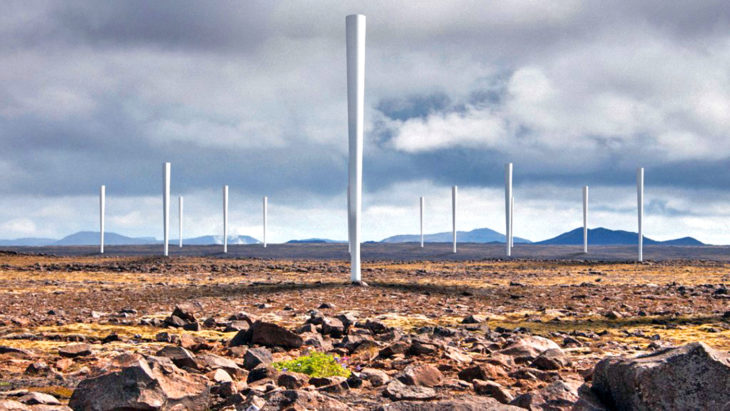Wind energy consists of obtaining electricity by transforming the kinetic energy of air currents. Since it is an inexhaustible source of energy, it belongs to the group of renewable energies. The power of the wind has been used throughout history in the sails of ships, in mills and water pumps. However, the transformation of mechanical power into electrical power by means of a wind turbine is characteristic of this type of energy. The first mill used as a wind turbine dated from 1887 and was built by Professor James Blyth of Anderson’s College in Glasgow, Scotland. It was 10 m high and had cloth sails. For the first time, a set of batteries was charged and power was provided to a house.
With the evolution of electricity, wind power had new applications, such as supplying electricity in buildings isolated from the electricity grid. Throughout the twentieth century, this power generation stations were built to generate electricity for farms or homes, as well as larger wind turbines that could be connected to the grid. Today, they operate in all ranges, from small facilities for recharging batteries in remote locations to large offshore wind farms that supply electricity to the national grid.

Source: epthinktank
The European Union is firmly committed to renewable energies in particular to wind energy. During 2018, wind was the second source of generation of the European electricity system after nuclear, with a contribution of 48,902 gigawatt hours (GWh) and 19% of consumer demand covered, according to the latest annual report of the Wind Energy Association (AEE). It is also estimated that this energy will be the first energy by 2030, since the installation of wind farms accounts for a third of all the energy generation installations carried out since 2000.
The relevance of wind energy has increased dramatically in recent years due to environmental challenges and growing energy demand. Its sustainable character is the most attractive aspect since wind is the consequence of the warming of the atmosphere by solar radiation and the rotation of the Earth. Looking to the future this characteristic is a great attraction. The commitment to the installation of wind farms represents an investment in technological innovation in this field, in which simulation tools are especially important.
Computational fluid dynamics is a science which uses numerical analysis and data structures to analyze and solve problems that involve fluid flows. This branch of fluid dynamics is used in modelling wind turbines and analyzing the behavior of the wind, even in huge farms which have plenty of turbines. So, many of these farms can benefit from using a kind of technology, such as the one offered by vortexfdc.com.

Source: Engadget
Vortex technology is a modeling system available to be used all over the world. The products this software uses are embedded into an efficient automated computing infrastructure. With its renewable resource modelling technology, this company offers solutions for this type of power throughout the life cycle of projects. The robust on-demand system is based on the open-source atmospheric modeling tool, Weather Research and Forecasting Model (WRF). The WRF is integrated into a high-performance computing infrastructure and it’s used in an automated and efficient manner. It includes long-term virtual series, on-demand regional mapping products, and project-specific evaluations.
The development of this technology started in 2005 by former Wind & Site engineers and computer experts. It was developed after intensive dialogue with the wind industry and by considering the clients’ feedback. The business model these experts developed is innovative and known as remote computing. Vortex technology is user-friendly and is run remotely.
The traditional wind modeling process is not reversed with the use of this technology and the supercomputer cluster. Hence, if your wind farm needs turbine analysis or wind measurements, you might want to consider using this company. It is an inexpensive and fairly accurate technology which will help you in any development stage of your wind farm.
